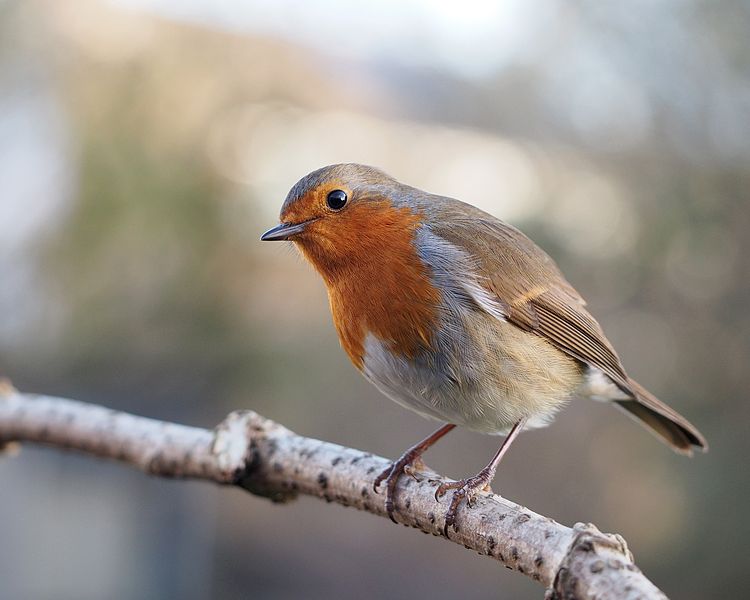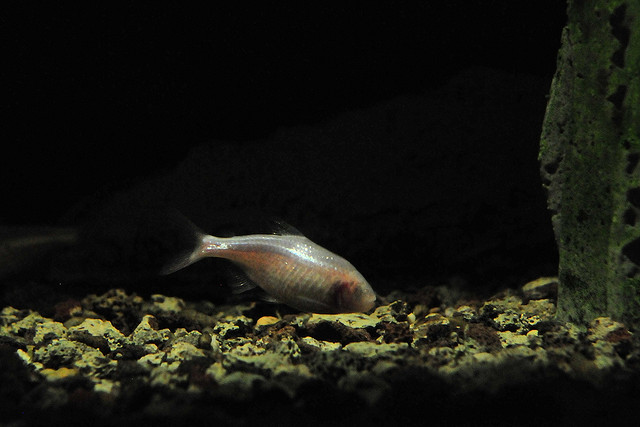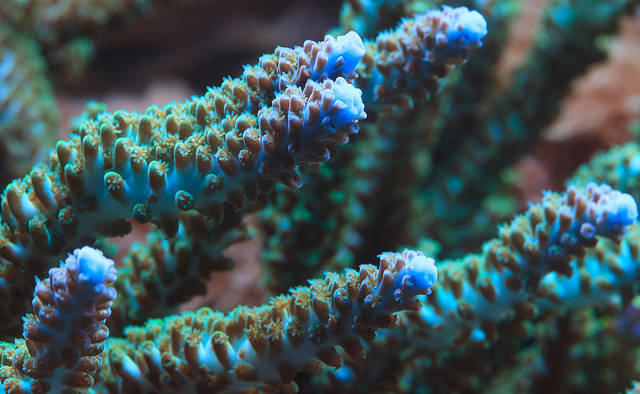Lost in migration

European robin, photo credit: © Francis C. Franklin / CC-BY-SA-3.0, wikipedia.com: http://bit.ly/1qD0ThK
We all are creating electromagnetic noise, literally all the time. That’s bad news for birds, a study reveals. According to the work of the University of Oldenburg, migrating birds such as the European robin may lose their way when exposed to the noise of radio signals and other electronic devices. The researchers exposed birds to background electromagnetic noises at the University’s campus which happens to be in a densely populated area with a lot of traffic. During the test the birds, which were in windowless wooden huts could not orientate themselves using their magnetic compass.
The robins’ compass relies on the magnetic field of the earth when they fly from north to south. The field is strong enough to guide birds even when inside a windowless room, if there’s no disturbing noise. To prove the results, the scientists carried out the tests again but with birds in electrically grounded, aluminum-screened huts. These huts are able to block noises between 50 kHz and 5 MHz. Guess what? The birds did not lose their navigation. And again, if the electromagnetic noise was introduced into the aluminum huts, the ability to navigate was lost. The researchers repeated the experiments during migrating seasons for seven years.
Incidentally, the test results, published in the journal Nature, did not apply for mobile phones signals, which have a different frequency.
Fears dead whale could burst
Uncertainty and worry are plaguing a small Canadian fishing village: Earlier this week, a blue whale carcass (80-feet long) washed up at the village’s shores. The dead body bloated as it filled up with methane due to decomposition. It’s now already doubled in size and it’s feared the carcass could explode any time. And no, it’s not funny at all as a Faroe Islands biologist could easily confirm. In November 2013, Faroese Television showed a clip of a dead sperm whale that had been lying on the beach for two days. When biologist Bjarni Mikkelsen made incisions in the whale’s side, the carcass exploded with a loud sound and released a pungent smell. But, the story doesn’t have to end this way – the gas could also simply seep out just like helium from a rubber balloon.
Ever hear of evolution ‘in reverse’?
How do you understand the term “evolution?” It’s synonymous with progress, development, advancement, right? But, sometimes evolution can also change direction.

Astyanax Mexicanus, a blind cavefish. Photo credit: CC BY-NC-SA 2.0 by Joachim S. Müller/flickr.com: http://bit.ly/1kcBaoO
Evolution is usually associated with developing new features to be able to adapt to environmental changes in certain regions. But, sometimes evolution can also go the other way. Called “regressive evolution,” the phenomenon describes nothing else but advancing in evolution by losing certain abilities or traits.
Cave-dwelling species, in particular, are affected by regressive evolution. These species have originally lived above ground and later, by geological events, were trapped below the earth’s surface. A very drastic example is Astyanax mexicanus, a blind and almost colourless, transparent fish species living in Mexican caves. It has a surface-dwelling counterpart that looks very much the same, just add a silverish color and, well, eyes. Both are the same species and are able to interbreed. In fact, the cavefish have eyes as embryos, but they never become fully developed. Instead of eyes, cavefish navigate with a tool that all fish have, a sensory system. But compared to thir overground counterparts, the blind fish system is about 50 times more effective.
It’s possible to find other examples in different habitats. Cimicidae (article in german), for example, have lost their ability to fly by regressing their wings during evolution. This also applies for lice (article in german). Snakes ran around on legs and feet a few million years ago, terrestrial vertebrates once had gills. And here’s another example we all know very well: humans. We lost our proud, ape-like tails during the process of evolution.
Do you see that as a loss? 🙂
India poll workers brave wild animals to reach voters
Braving hungry crocodiles, Asiatic lions, wild elephants and traveling in camel caravans– sound like an Indiana Jones movie? It’s what some election officials in India have faced in recent days trying to do their job.
 This Asiatic lion, along with other wildlife, awaited an election team in the Gir forest in Gujarat (Photo credit: CC BY 2.0: Shaunak Modi)
This Asiatic lion, along with other wildlife, awaited an election team in the Gir forest in Gujarat (Photo credit: CC BY 2.0: Shaunak Modi)
Pulling off a parliamentary election in the world’s largest democracy is never an easy task. Apart from the mind-boggling logistics this time (814 million eligible voters; over 930,000 polling stations; nearly 6 million poll workers), India’s physical size and topographical diversity trigger an obstacle course for some poll workers. From snow-bound mountains in the northern Himalayas, the deserts of western Rajasthan, tropical jungles to tiny remote islands in the south, some poll officials have to navigate a variety of routes to ensure citizens can cast their votes. And, a few election officials have also had to brave the teeming wildlife that comes with the terrain.
One newspaper report, along with a video, detailed how election officials on the Andaman and Nicobar archipelago in the Indian Ocean – home to more than 550 islands, many of them heavily forested – recently got into canoes and undertook a three-hour journey on a river infested with crocodiles. Their job was to get to a remote village along with their two voting machines and set up a polling booth. The mission, though harrowing, was eventually successful. But election officer, Biswajit Roy, a veteran of national polls, told the Wall Street Journal: “In all my years, this by far was the toughest.”
There were also reports of officials trudging through tropical jungles inhabited by snakes and traveling in camel caravans to reach settlements in the Thar desert in northwestern Rajasthan. Big animals were also very much on the mind of a polling team that traveled to the Gir forest in the western state of Gujarat – home to the majestic Asiatic lion – to cater to a lone voter in a hamlet there. Election rules in India say there must be a polling station within two kilometers of every residential community.
And, earlier this month, election officials in the northeastern state of Meghalaya had to contend with a herd of wild elephants that blocked the way to two polling stations. They were eventually chased away into the jungle by forest rangers.
Sturdy corals defy global warming
So far, we’ve believed that reef-building corals around the world are hugely vulnerable to rising ocean temperatures and can suffer bleaching as a result. But, scientists recently discovered a coral species that can actually seem to adapt to warmer weather.

Not exactly Acropora hyacinthus, but another coral of the Acropora family (Photo credit: CC BY 2.0: Will Thomas/Forge Mountain Photography)
Remember your last trip to the sea? You probably recall how the water around you felt warmer the closer to the beach you were and colder the farther you swam out to sea. And while you can move from colder to warmer water and the other way round, corals cannot. They stay put in their surroundings. So, researchers decided to look at how the same coral species can deal with different water temperatures.
Along the coasts of American Samoa, coral Acropora hyacinthus lives and grows on the reefs. Water levels shift due to the tides, leaving the corals along the flatter beaches covered with less water during low tide. This water can be heated up more easily by the sun, periodically exposing the corals to a warmer environment.
Stephen Palumbi from the University of Stanford and his team collected both: Acropora hyacinthus corals from flatter areas and also ones from the deeper, cooler sea. Next, they put all the corals in so-called “stress tanks” where the scientists could deliberately alter water temperature.
When substantially heating the water in the stress boxes, the researchers made a crucial observation: the corals collected from the deeper, cooler sea died. But the ones collected from those exposed to periodically warmer areas survived. They were already used to warmer temperatures and changing temperatures and thus able to adapt, researchers concluded.
Palimbo states in a video: “Now, the real hope for the stress tanks is to take them elsewhere in the Pacific and find other corals that are just as strong as the ones we found here in American Samoa.”








Feedback